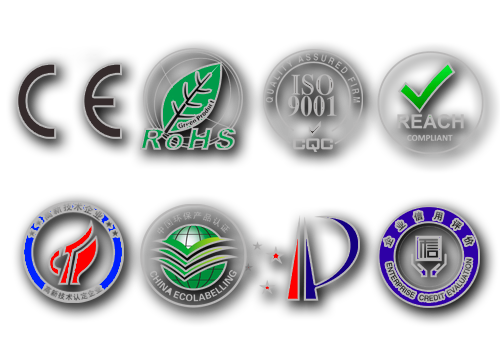The principle of filtration and the factors affecting the effectiveness of medium filters
The principle of filtration and the factors affecting the effectiveness of medium filtersThe filtration principle of the medium filter 1. Interception The dust particles in the air, with the airflow for inertial motion or irregular Brownian motion or by the role of some field force and move, when the particle movement hit other objects, objects between the existence of the van der Waals force (is the molecules and molecules, molecular clusters and molecular clusters between the force) so that the particles stick to the surface of the fiber. The dust entering the filter media has more chance to hit the media and will be stuck when it hits the media. Smaller dust colliding with each other will bond to each other to form larger particles and settle, and the concentration of particles of dust in the air is relatively stable. Fading of the interior and walls is due to this. It is a mistake to treat fiber filters like sieves. 2. Inertia and diffusion The smaller the particles, the more violent the irregular motion, the more chances to hit the obstacle, and the better the filtering effect will be. Particles smaller than 0.1 microns in the air are mainly in Brownian motion, with small particles and a good filtering effect. Particles larger than 0.3 microns are mainly inertial, the larger the particles, the higher the efficiency. The larger the particle, the higher the efficiency. Particles with less diffusion and inertia are the most difficult to filter out. When measuring the performance of high-efficiency filters, it is often specified that the most difficult dust efficiency values are measured. 3. Electrostatic effects For some reason, fibers and particles can become electrically charged, creating an electrostatic effect. Filtration with electrostatically charged filter materials can be significantly improved. The reasons for this are: the electrostatic charge causes the dust to change its path and hit an obstacle, and the electrostatic charge causes the dust to stick more firmly to the media. Materials that are electrostatically charged for long periods are also called "electret" materials. When the material is electrostatically charged the resistance remains unchanged and the filtration effect is significantly improved. Static electricity does not play a decisive role in the filtration effect, but only a secondary role. 4. Chemical filtration Chemical filters are mainly selective in the adsorption of harmful gas molecules. Activated carbon materials have a large number of invisible micropores with a large adsorption area. In the activated carbon of the size of a grain of rice, the area inside the micropores is more than ten square meters large. After contacting the activated carbon, the free molecules coalesce into liquid in the micro-pores due to the capillary principle and stay in the micro-pores, some of which are integrated with the material. The adsorption without an obvious chemical reaction is called physical adsorption. In some cases, the activated carbon is treated and the adsorbed particles react with the material to produce solid substances or harmless gases, which is called wye-logical adsorption. The adsorption capacity of the material decreases for its use and when it reaches a certain level, the filter is scrapped. If the adsorption is only physical, heating or water vapor fumigation can be used to remove the harmful gases from the activated carbon and regenerate it. Factors affecting the effectiveness of medium filters Affecting the resistance of the air conditioning filter is the wind speed, the greater the wind speed the greater the resistance of the filter; the second is the pollution of the filter dust, the greater the pollution, the greater the resistance. In the case of air, speed remains unchanged, the wind resistance reflects the amount of dust collected by the filter. The resistance of a newly installed air filter is called initial resistance and increases with the increase of adsorbed particles. The increase in wind resistance increases the pressure loss of the wind, reduces the wind speed and the transmission of wind power, increases the power delivered by the fan, and is not conducive to energy saving. To maintain and reduce the rise in wind resistance, the air conditioning air filter needs to be replaced or cleaned frequently, increasing maintenance costs. In the daily operation of air conditioners, air humidity is also a cause of wind resistance. A rise in humidity will cause dust particles adhering to the filter material to bond into clumps, blocking the flow of air and also increasing wind resistance. Therefore, we have to find a balance between the impact of air resistance, economic costs, and the energy efficiency of the fan to improve the medium air filter for air conditioning in the leaf storage room. |

 German
German French
French Italian
Italian Portuguese
Portuguese Japanese
Japanese Korrean
Korrean Russian
Russian




